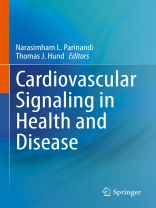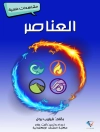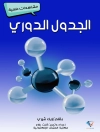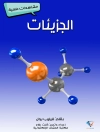This contributed volume focuses on cardiovascular diseases (CVDs), and explores the ways in which signaling mechanisms at the biochemical, molecular, and cellular levels in the blood vessels (vascular) and heart contribute to the underlying causes of development and progression of the CVDs. This volume covers unique topics such as oxidant signaling in vascular and heart diseases and health, cytoskeletal signaling in vascular health and disease, phospholipase signaling in CVDs, lipid signaling in vascular and myocardial health and diseases, and drug discovery in cellular signaling for cardiovascular diseases.
This book assembles the most important discoveries made by leaders on the cellular signaling mechanisms operating behind the development and progression of life-threatening CVDs. It is an extremely useful resource for the investigators in the field of CVDs, and opens the discussion for further discovery of efficient management and effective treatment of the CVDs.
Cuprins
Part 1: Cardiac Signaling .- Chapter 1: Calcium-Dependent Signaling in Cardiac Myocytes.- Chapter 2: Organization of Ca2+ Signaling Microdomains in Cardiac Myocytes.- Chapter 3: Stress Kinase Signaling in Cardiac Myocytes.- Chapter 4: Cardiotoxicity and cardiac cell signaling.- Chapter 5: Protein Phosphatase Signaling in Cardiac Myocytes.- Chapter 6: Metabolic Regulation of Mitochondrial Dynamics and Cardiac Function.- Chapter 7: NADPH Oxidase System Mediates Cholesterol Secoaldehyde-Induced Oxidative Stress and Cytotoxicity in H9c2 Cardiomyocytes.- Chapter 8: Lipid Mediators in Cardiovascular Physiology and Disease.- Chapter 9: Cardiac Inflammasome and Arrhythmia.- Chapter 10: Myocardial Fibrosis: Cell Signaling and In Vitro Modeling.- Chapter 11: Neural regulation of cardiac rhythm.- Part 2: Vascular Signaling .- Chapter 12: Mechanisms of lipoproteins and reverse cholesterol transport in atherosclerotic cardiovascular disease.- Chapter 13: Atherosclerotic plaque regression: Future perspective.- Chapter 14: Role of Bioactive Lipid, Phosphatidic Acid in Hypercholesterolemia Drug-induced Myotoxicity – Statin-induced Phospholipase D (PLD) Lipid Signaling in Skeletal Muscle Cells.- Chapter 15: Cell-Cell Communication in the Vascular Endothelium.- Chapter 16: Lysophosphatidic acid regulates endothelial barrier integrity.- Chapter 17: Regulation of Vascular Endothelial Barrier Integrity and Function by Lipid-Derived Mediators.- Chapter 18: Hyperglycemic Oxoaldehyde (Glyoxal)-induced Vascular Endothelial Cell Damage through Oxidative Stress is protected by Thiol Iron Chelator, Dimercaptosuccinic Acid – Role of Iron in Diabetic Vascular Endothelial Dysfunction.
Despre autor
Narasimham L. Parinandi (p Ari) is an Associate Professor in Department of Internal Medicine, The Ohio State University College of Medicine. Parinandi received his B.Sc. (Hons) in botany with chemistry, zoology, English and M.Sc. in Botany with Environmental Biology in Berhampur University, India in 1975-77. From 1977-80, he was a research fellow in Environmental Sciences at the Andhra University, India. He earned his Ph.D. (1986) at the University of Toledo, Toledo, OH in Biology & Toxicology under the tutelage of Prof. Woon H. Jyung, an established zinc metabolism expert and aging biologist. During his graduate training at Toledo, he was exposed to the field of lipids by Prof. Max Funk, an expert lipoxygenase enzymologist from the lineage of Prof. Ned Porter. He did his post-doctoral fellowship (1986-90) at the Hormel Institute, University of Minnesota, the premier lipid institute in USA where he was trained with Prof. Harald Schmid, a celebrity in the area of ether lipids and apioneer in anandamide chemistry. At the Hormel Institute of the University of Minnesota, Parinandi was associated with Prof. Ralph T. Holman (Member of the National Academy of Sciences and Pioneer in Fatty Acid and Lipoxygenase Biochemistry who also coined the name “Omega-3 Fatty Acid”) and conducted studies on omega-3 fatty acid dynamics in humans. He was also a research scientist/junior faculty at the Johns Hopkins University School of Medicine (1998-2002) under the mentorship of Prof. V. Natarajan, renowned lipid signaling expert and Prof. Joe G.N. (Skip) Garcia, a celebrated lung vascular biologist. Parinandi has published nearly 125 peer-reviewed original scientific papers, reviews, and book chapters, and edited books on Free Radicals and Antioxidant Protocols with Prof. William Pryor, the legendary Free Radical and Lipid Peroxidation Scientist, Mitochondria in Lung Health and Disease with Prof. Viswanathan Natarajan, a lipid signaling celebrity, and on Measuring Oxidants and Oxidative Stress with Prof. Lawrence J. Berliner, a celebrity in the field of Free Radical Chemistry and Biology. Parinandi has given more than 50 invited scientific lectures at the national level in the US and international institutions and conferences. He has also conducted and chaired several scientific conferences and symposia in the areas of oxidative stress and lipidology. He has teaching and mentoring experience of more than 30 years and mentored over 75 students, technicians, fellows, and junior faculty in his laboratory. He served as an editor of the Chemical Abstracts of the American Chemical Society. He has been a reviewer of over 70 peer-reviewed journals in the area of biochemistry, molecular biology, cell biology and Lipidomics. Parinandi has been on the editorial board of the Molecular Biology Reports (Springer), Frontiers of Pharmacology, World Journal of GI Pharmacology, Current Chemical Research, Cell Biophysics and Biochemistry (Associate Editor), and The Protein Journal. He has also received extramural funding from the National Institutes of Health (NIH), Department of Defense (DOD), American Thoracic Society (ATS), and International Academy of Oral Medicine and Toxicology (IAOMT) as a principal investigator (PI) and co-investigator (Co-I). Parinandi also serves as a reviewer of grant proposals of the NIH, AHA, DOD, US Universities, Government of Israel, Government of Austria, and Government of South Africa. Parinandi has received awards including the Gold Medal for securing the highest GPA in the M.S. class of 1975-77 of the Berhampur University, India, the Outstanding Teaching Assistant Award of the Biology Department of the University of Toledo in 1986, Distinguished Mentor Award of the Davis Heart & Lung Research Institute of the Ohio State University Wexner Medical Center in 2008, and the Distinguished Undergraduate Mentor Award of the Ohio State Undergraduate Research Program in 2009.
Dr. Hund is a Professor of Biomedical Engineering and Internal Medicine at The Ohio State University and a Fellow of the American Heart Association. He also serves as Director and the William D. And Jacquelyn L. Wells Chair at the Dorothy M. Davis Heart and Lung Research Institute in the OSU Wexner Medical Center. Research in the Hund lab has defined novel molecular pathways for local control of cardiac ion channel activity with important implications for human cardiac arrhythmia and heart failure. His group has developed novel computational models and tools to study cardiac electrophysiology and arrhythmia that are routinely used by labs around the world. His approach is distinguished by a highly interdisciplinary style combining state-of-the-art computational and experimental techniques. He has published >100 peer-reviewed articles and although he has contributed several book chapters in the past, Cardiovascular Signaling in Health and Disease represents his first volume as co-editor. In his roleas Director, Dr. Hund oversees strategic planning and operations for one of the largest interdisciplinary institutes in the country with >700 faculty, staff, and trainees dedicated to the integrated study of heart and lung disease. In addition to his research and leadership achievements, Dr. Hund has been recognized for his dedication to promoting undergraduate and graduate education through curriculum development, didactic teaching and mentoring. He has mentored dozens of students, postdocs and fellows, the large majority of whom go on to successful scientific careers in industry or academia. Pre- and postdoctoral trainees in the Hund lab have been very successful in securing independent fellowship awards, including NIH K99/R00 “Pathway to Independence” Awards, NIH Ruth L. Kirchstein National Research Service Awards, and Pre- and Postdoctoral Fellowship Awards from the American Heart Association. Dr. Hund has also regularly taught several courses in the Departmentof Biomedical Engineering, including a popular graduate course on Excitable Cell Engineering. Before joining Ohio State in July 2011, Dr. Hund was an Assistant Professor of Internal Medicine and Biomedical Engineering at University of Iowa. He received his B.S.E. in Biomedical Engineering from Duke University and his M.S. and Ph.D. in Biomedical Engineering from Case Western Reserve University, followed by postdoctoral training at Washington University School of Medicine in St. Louis.












